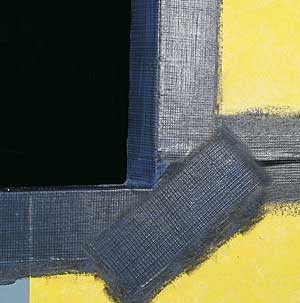21st Century Building Envelope Systems: Merging Innovation with Technology, Sustainability, and Function
Liquid Applied Flashing System
All of the previous building envelope products discussed are visible exterior building design elements. However, building performance relies on many components that contribute to keeping buildings dry. Flashing is the system that prevents water and moisture from entering a building at wall and window openings and penetrations.
"In many cases, the components you cannot see in a wall assembly serve a more important role in the overall building envelope performance than the components you can see. For architects, the specification of fluid applied flashing and weather resistive barrier products facilitate ease of detailing, interpretation, coordination, application and above all, contribute to the overall long-term performance of a building, leading to piece of mind for both the architect and the building owner," says Robert W. Dazel, AIA, Regional Manager Midwest, Dryvit Systems, Inc., Monroe, Michigan.
 |
| Liquid applied flashing systems consist of mesh tape and two coats
of fluid at the window rough opening. Upon curing, a chemical
bond forms, creating a seamless flashing condition. Photo credit: Dryvit |
The liquid component of some flashing systems is an extremely flexible, waterproof, water-based polymer material used in conjunction with a compatible mesh tape, to seal substrates around windows, doors, and other openings. The flashing system provides an effective water-resistant membrane designed for use with certain building envelope systems, and is an acceptable alternative to flashing tape. It can also be applied to bridge across floor lines and other construction joints.
Traditional flashing methods include a peel and stick membrane that must be cut to size, and carefully installed by the general contractor. Design professionals must be able to provide details and specifications so the contractor can install the system under proper temperature conditions. A mechanical bond forms when one piece of peel and stick membrane laps over another and adheres to it.
With a liquid applied flashing system, reinforcing mesh is applied to the window rough opening when the first coating of fluid is still wet. The second coating forms a chemical bond. The fluid applied flashing cures, or sets, into a membrane-like product. When the system cures, it creates a seamless flashing condition, through this chemical bond. The liquid can be applied to most traditional building envelope materials, but not to pressure treated or fire treated plywood, or other treated materials. The cured flashing system has no seams, holes or punctures, often the sources of water infiltration, that may result with the use of peel and stick flashing tape.
Flashing System Benefits
This liquid applied flashing material and mesh system is easy to install, is used directly from the pail, and can be applied using a brush or roller over approved, clean, dry substrates. Drying time depends upon the air temperature, wind conditions, and relative humidity.
Unlike other traditional flashing methods where workmanship and extensive training may be required for proper installations, an unskilled worker can be readily trained to install this system quickly and on-site.
Architects need not develop details for this system at openings and wall penetrations; a single line shown on drawings as flashing is sufficient. This eliminates another potential problem for the architect and the contractor. The system is flexible, appropriate for new construction and renovation, in residential and commercial buildings, in any climate.









